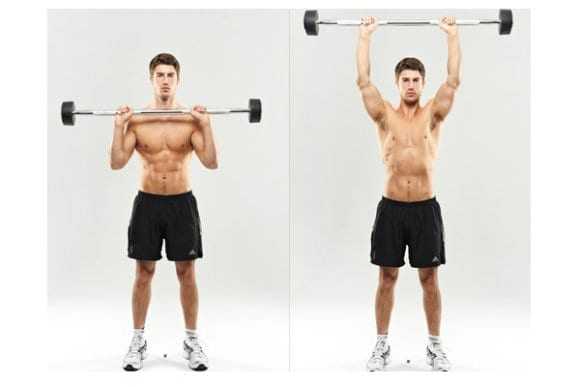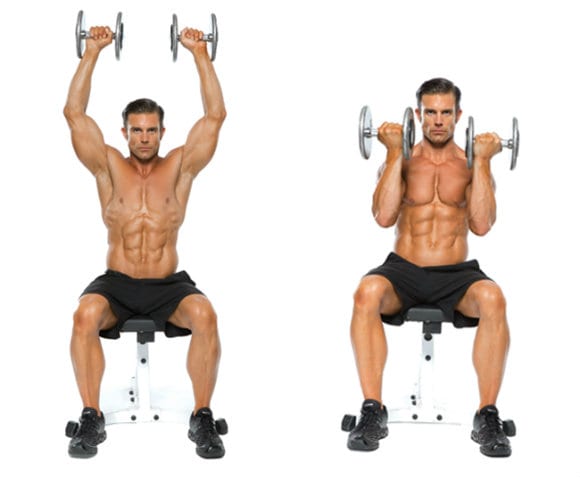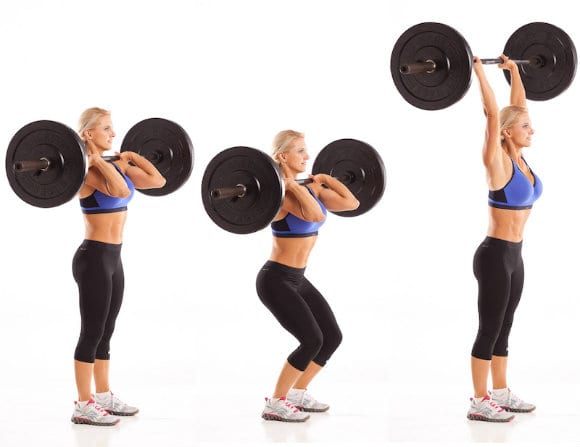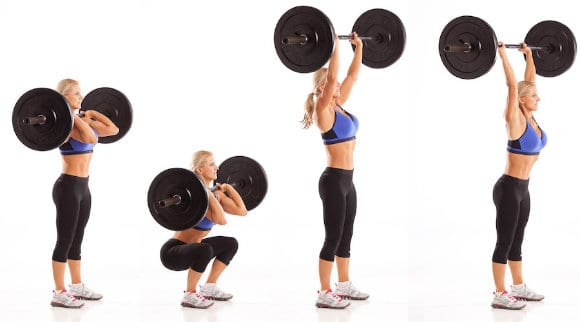By the healthiergang writer , student in Medicine and Surgery.
Shoulder Press
Lo Shoulder Press it is an exercise in weight training, where the load is pushed directly upwards. It is often referred to as Slow forward, Military press o Overhead press and various tools such as barbell, dumbbell, kettlebell, medicine ball or sandbag can be used. To analyze the correct execution of the gesture we will refer to the sitting variant with the use of the barbell, the classic slow forward.
Correct execution
The start sees the barbell resting on the collarbones, with the grip slightly wider than the shoulders and with the elbows looking down.

At this point the barbell is lifted upwards bringing it over the head and fully extending the elbows. This is the complete movement of the exercise, i.e. the maximum ROM (range of motion), muscular excursion that can be performed.
Muscles involved
During the exercise many muscles are stimulated: the deltoids, activated along the entire range of motion, Trapezius, Risers of the scapula and Rhomboids, whose work touches the apex between 135 ° and 180 ° in abduction of the humerus and the brachial triceps muscles (elbow distension) and Clavicular bundles of the Pectoralis major.
From this fixed point, depending on the type of training we are carrying out, the joint excursion we want to obtain, from the grip on the tool and from the tool itself, we can try our hand at a myriad of variations.
In Bodybuilding, where you aim for one hypertrophy mainly of the deltoids, the movement can have a reduced range, not reaching the lock-out position (elbows extended and locked above the head) but stopping before the massive intervention of the scapulae elevators, therefore approximately 135 °, i.e. with the elbow at eye-forehead level.
The loads used are important, especially with the barbell. The use of dumbbells substantially involves a greater work of the stabilizers and a movement that instead of being performed on the sagittal plane (in front of the face) is performed on the frontal plane (on the sides of the head). The muscles involved are always the same, but there is one emphasis on the anterior head of the deltoid. It can be done on a slightly inclined bench or standing (Military style).
Electromyographic studies (which detect activation and involvement of the muscle heads) have produced a series of data regarding the muscular engagement of the various heads of the deltoid depending on the use of the barbell or dumbbells or in the sitting / standing variant: the lateral head is always the one most involved and who exerts more strength and power, the front head is best recruited in the dumbbell variant, both seated and standing, while the rear head, which mainly carries out a stabilizing action, is mostly recruited in the standing variants with both dumbbells and barbell. To underline what has been said, the maximum power developed is found in the standing execution with the barbell.
variants
To these classic exercises seen, the Arnold push exercise is often incorporated by personal trainers in gyms, introduced by the great Schwarzenegger, which involves a diagonal movement: starting from sitting with the dumbbells at shoulder height and with the forearm supinated (palms facing the face) and in a single movement you arrive in with the weight above your head in the shoulder position, then practically rotating the limb.

The forces involved and the muscles involved are always the same, with the same principle of activation of the scapulae elevators as seen above.
In performance sports, where instead it is necessary to bring the weight from a point A to a precise point B, a complete movement is made, fully exploiting the ROM. In this case the classic shoulder press is carried out in many variations and incorporated into more complex global movements.
#1 Push press
It is a variant of the classic shoulder, where in the positive phase of the movement the thrust of the lower limbs is accompanied by that of the shoulders. The starting point is always with the barbell on the collarbones and the weight is brought up by aligning the wrists, shoulders, pelvis and ankles (i.e. without letting the bar come out of the center of gravity).

It is mainly used in the power development and to improve general conditioning. The exercise is part of the more elaborate clean and press or thruster, which involves a squat and explosive upward thrust (later analyzed in detail).
#2 Clean and Press
A weight lifting movement in which the first part, consisting of a turn to the chest, brings the barbell from this point over the head, in the lock out position, with only the intervention of the upper limbs and without push from the lower ones.
In the Olympic disciplines it is no longer used but being a compound movement it really is great for developing strength and power engaging the whole body in a single exercise.
#3 Thruster
This is also a hybrid of 2 performance exercises: front squat e push press; by many it is considered a sort of extreme push press, as the thrust given by the pelvis and lower limb is predominant. It can be performed with different tools (barbell, dumbbells or kettlebells); the starting point is the classic position of the push press, with the forearms perpendicular to the floor and with the feet shoulder-width apart.

From here, a squat is performed to parallel or slightly beyond (keeping the chest forward and preserving the physiological lumbar curve) and with a single movement the tool is brought over the head, accompanying the thrust of the thighs (as when rising from a front squat) to that of the arms. Carefully return the weight to the collarbones and start the exercise again.
In conclusion
THEcare in the execution must always be maximum as lifting the weight above the head involves careful stabilization of the back, especially in the variant standing with dumbbells. The greatest stresses are due to excessive extension of the lumbar arch.
Note that in the variants the shoulder press was not inserted behind the neck; from my personal experience, the exercise causes a large and unnecessary stress to the joint capsule, an almost unnatural movement given the position of extreme external rotation and extreme abduction, moving the movement to small muscles with a stabilizing function, such as those of the rotator cuff, subjected in this case under heavy loads; having made this premise, I would feel like excluding it from a training routine by preferring the front (barbell) and lateral (with dumbbell) variants.
Good workout!


























